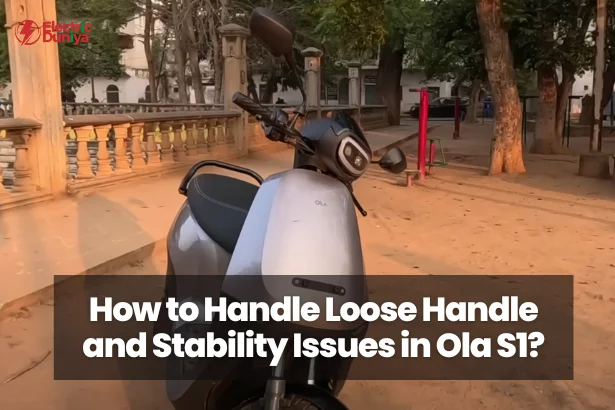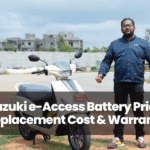A few weeks ago, I was riding my Ola S1 electric scooter like any other day when I noticed something unsettling — the handlebars felt a bit wobbly.
At first, I thought it was just the road surface, but after a few rides, the steering felt less stable than usual, especially at higher speeds.
That’s when I decided to give my scooter a thorough check. It turned out to be a mix of minor adjustments and routine maintenance — nothing major, but important for safety and comfort.
If you’re dealing with the same problem, here’s exactly what I did (and what you can do) to get your Ola S1’s handlebars tight and ride stability back to normal.
1. Check Handlebar Tightness
The first thing I did was grab my Allen key set and check the bolts securing the handlebars to the stem. Sure enough, one of them had loosened slightly.
Steps:
- Turn off the scooter and place it on the center stand.
- Use the correct-size Allen key or wrench to tighten the handlebar bolts.
- Don’t overtighten — just enough to firmly secure without stripping the threads.
Now I make this part of my regular Ola S1 maintenance routine, so it never surprises me again.
2. Grip Check — Comfort and Control Matter
Next, I checked the handlebar grips. Mine were fine, but I’ve seen riders struggle with grips that slip or feel too soft.
If yours are worn out:
- Replace them with electric-scooter-specific grips for better control.
- Choose a texture and thickness that feels comfortable for your hands.
- Bonus: You can go for colored or patterned grips to give your scooter a personal style upgrade.
3. Adjust Handlebar Height for Better Ergonomics
Although the Ola S1 handlebar height isn’t adjustable like some foldable scooters, you can make micro adjustments if you’ve replaced or reinstalled parts.
Your posture affects control, so make sure the bars sit at a height where your arms are relaxed and slightly bent.
For most riders, keeping handlebars around waist-to-mid-chest level gives the best balance between stability and maneuverability.
4. Lock Down the Folding Stem
The stem is the vertical tube connecting your handlebars to the front wheel assembly. On scooters with a folding mechanism, a loose stem can cause serious steering instability.
Even though the Ola S1’s stem isn’t foldable like smaller e-scooters, the locking area near the steering column should be checked regularly.
- Inspect the locking nut and hinge area for play.
- Tighten any loose fasteners.
- If you notice excessive wobble, visit an Ola service center for alignment.
5. Pump Up the Tires for a Stable Ride
I learned this one the hard way: low tire pressure can make the Ola S1 feel unstable, especially while turning.
When I checked mine, the front tire was a few PSI below the recommended range.
Quick fix:
- Use a digital tire pressure gauge.
- Inflate to the PSI listed in the Ola S1 manual (typically around 32–36 PSI for road use).
- While at it, inspect the tread for wear or small embedded debris.
6. Suspension Check
While the Ola S1 doesn’t have a traditional motorcycle-style suspension, the front fork and rear shock play a big role in stability.
Here’s my simple check routine:
- Look for visible damage or cracks on the suspension parts.
- Push down on the front and rear — they should rebound smoothly without clunks.
- Listen for rattles while riding over bumps.
- Check for oil leakage around the rear shock absorber.
If anything feels off, it’s worth getting it checked by a technician. Suspension wear can creep up slowly and affect both comfort and safety.
7. Ride Smoothly and Stay Centered
Finally, even with a perfectly tuned scooter, riding technique matters.
- Keep your weight centered over the deck.
- Avoid sudden, jerky handlebar movements.
- Brake smoothly instead of grabbing the lever abruptly.
Once I consciously kept my riding smoother, the wobbly feeling reduced even further — stability isn’t just about the hardware, it’s also about how you ride.
Final Thoughts
When I first felt my Ola S1’s handlebars loosen up, I worried it might be a serious mechanical problem.
But after a careful inspection, it turned out to be a simple fix — tightening bolts, checking tires, and making sure the suspension and grips were in good condition.
Most Ola S1 stability issues are caused by a combination of small factors rather than one major fault.
If you go through these checks step-by-step, you can often fix the problem yourself without a costly service visit.
Ride safe, keep your scooter in good shape, and remember: regular maintenance is the easiest way to keep your Ola S1 smooth, stable, and fun to ride.







